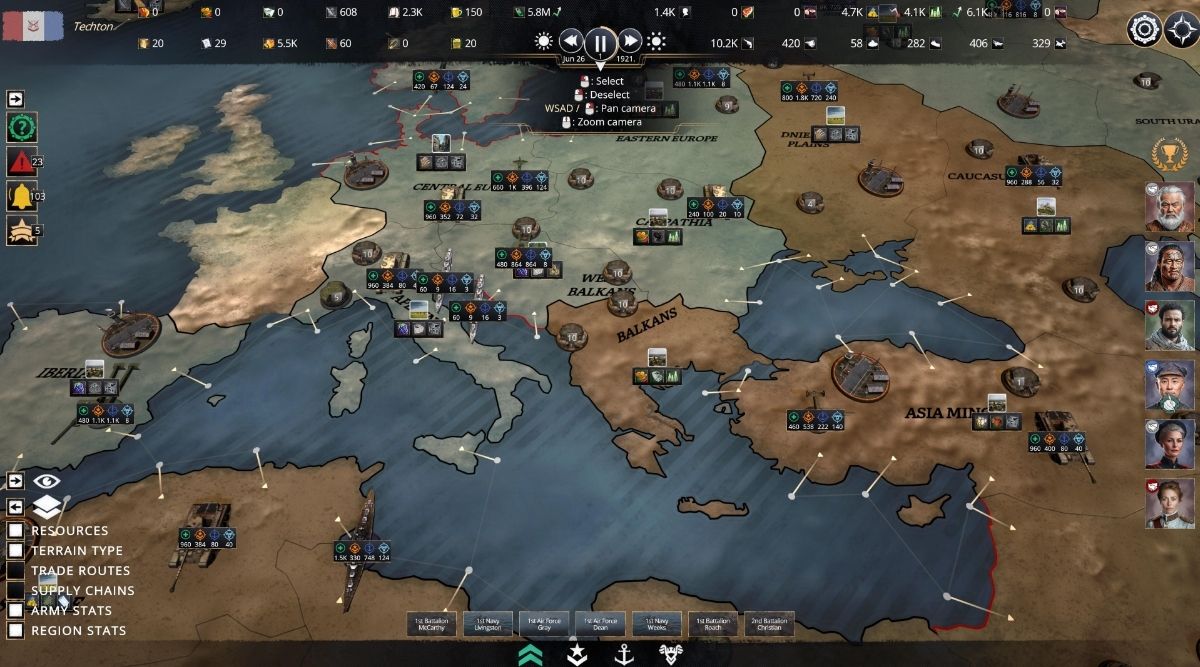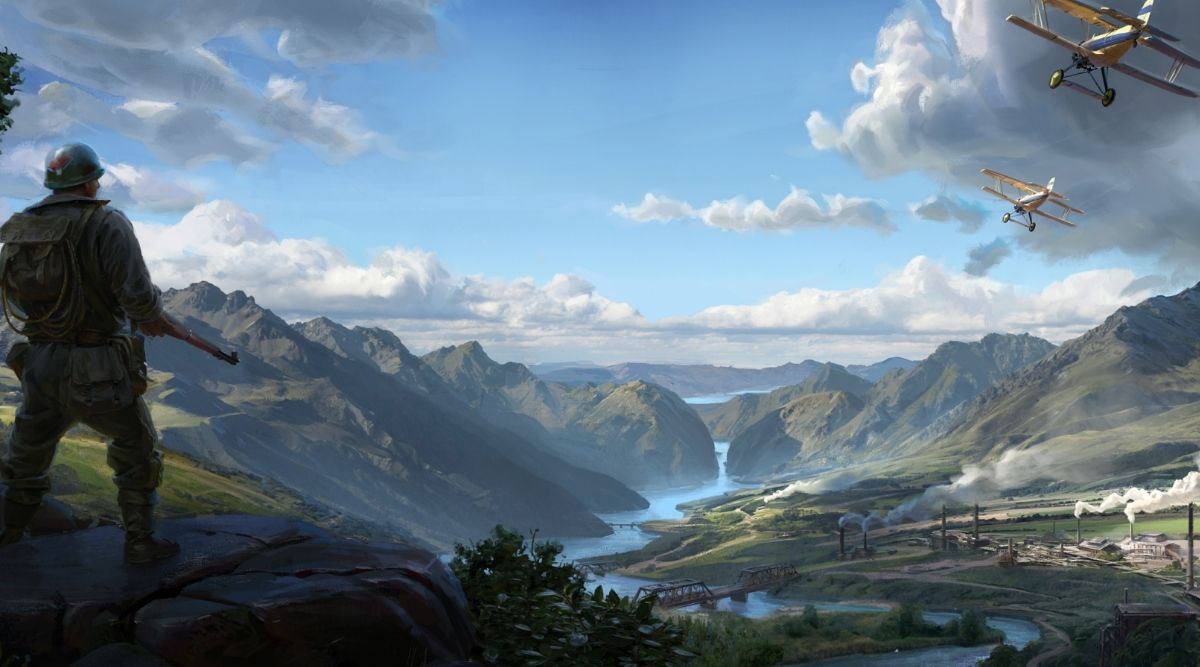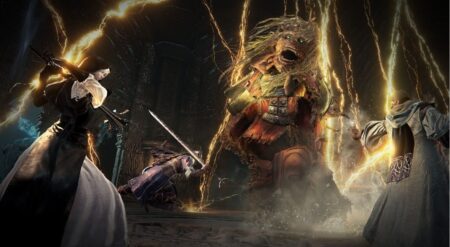Developed and published by the Croatian studio Overseer Games, Kaiserpunk is an alternative history city builder that promises to take the player from setting down their first house to ruling the world. It is set in a timeline where the First World War continued unabated well past 1918, ravaging the world to near destruction. Atop the ashes of the old world, you are tasked with founding a new city and fighting with everything you have to protect it.
Kaiserpunk is played on two levels: your primary city and the global stage of diplomacy and warfare. The foundation for everything is your city building, so we’ll start with that. Building up a small town and expanding to a sprawling metropolis is built on fundamentals that will be familiar to fans of other city builders. You’ll have to manage your population, keep citizens happy, harvest resources, process those resources into more complicated ones, deal with hazards like fires, and, on top of it all, lay it out to look nice and be efficient.
The tools present for building your town in Kaiserpunk are relatively basic, with some helpful quality of life features like a copy option. Watching your city grow and expand is very satisfying, especially when it comes to setting up supply chain lines. Which is good because, oh boy does Kaiserpunk love supply chains. Within a dozen tasks in the tutorial, players are shown how to establish a supply chain to harvest wood from a forest, turn it into lumber, and then turn the lumber into plywood.
And supply chains only grow and expand from there, eventually exploding in a complicated web of micromanaged chains of things being turned into other things to be turned into other things to actually be useful. If you ever stop to look at the big picture with all of its multiple cottage industries, building upgrades, and logistical headaches, it can be a tad overwhelming.
Kaiserpunk loves its supply chains, and the tutorials do a good job explaining them.

Thankfully, Kaiserpunk‘s tutorials and research system do a good job of gently guiding players down a progression of technologies and resources. You only unlock more buildings and production capabilities as you complete research by placing buildings in your city. This keeps it all approachable as you slowly expand your city’s borders and capabilities.
Where Kaiserpunk‘s city-building struggles is in its UI. A strategy title’s UI can make or break a game, and while Kaiserpunk‘s doesn’t spoil the experience, it does diminish it. Primarily because of the menus are overloaded. This problem is particularly bad in the early stages of the game when the player is frequently unlocking new buildings and upgrades, all of which are crammed in a row on a crowded research screen as tiny icons that are very difficult to read.
The UI issues also pop up when dealing with resources. Each resource has such a small, grainy image to go off of that it is tough to tell what they are. The problem is all the worse when the game insists on showing you every resource in the game at once, reducing them all to a grainy smear difficult to parse through. With how much time is spent managing resource levels, setting up supply chains, and trading those same resources with other powers, it is an issue that comes up more than one would expect.
Then, there’s Kaiserpunk‘s global level of gameplay, which is unfortunately the game’s weakest element. At any time, the player can jump from viewing their city to all of Earth, which has been split up into 100 sections that can be controlled and exploited for resources. To control those regions, players have to fund and build up ground armies, navy fleets, and plane squadrons. Each can be upgraded and moved around the map on missions.
Kaiserpunk’s military and diplomacy sytems looks nice but the gameplay is lackluster.

The military system has a fun presentation by having the armies and units look like miniatures being used on a table-map, but the rest of the system falls apart. Performing any troop movements or tasks takes an extremely long amount of in-game time, thanks to lengthy cooldown timers on every action. Then, when you do get to combat, it is functionally little more than the board game Risk.
Your army lines up and shoots at the opposing army, and both parties lose some health. Then, the attacker retreats unless the defending army is killed. To take over a region, you repeat the process over and over, slowly grinding down the opposing army. It is one of the least satisfying and shallow combat systems in a strategy game in recent memory.
Diplomacy in Kaiserpunk is similarly barebones, lacking the depth and intricacies of what many genre fans have come to expect. Opposing factions pop up throughout a playthrough, but the only ways to interact with them besides war are trading resources or working together to progress the player’s research. The options are so limited that none of the factions end up having any personality beyond a leader image and a generic name. It all builds toward making each faction feel just like another target to declare war on, rather than a unique geopolitical entity to interact with.
Perhaps one of Kaiserpunk‘s biggest issues is that it tries to do too much. While its city-building elements are satisfying and well fleshed out, they are ultimately only in service of a lackluster combat system that never feels worth engaging with. There is also a strange taste left in one’s mouth by Kaiserpunk‘s odd thematic hypocrisy.
Rebuilding civilization after the horrors of the First World War is a powerful setup as you struggle to reclaim your humanity and rebuild the world that humanity’s hubris destroyed. Then, the only path to victory is total world domination and enforcing peace through an iron-fisted rule. It makes the entire experience feel as though it is willfully ignoring the tone and history that it has established. It is not enough to spoil the game, but it does contribute to Kaiserpunk‘s feeling of mismatched intentions and focus.
Kaiserpunk is available now on PC.
Kaiserpunk
-
Rating - 5/105/10
TL;DR
Perhaps one of Kaiserpunk‘s biggest issues is that it tries to do too much.








